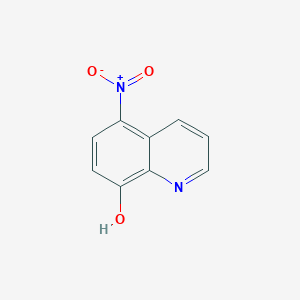21 bottles of cancer cell doctors may be in prison
-
Last Update: 2020-01-08
-
Source: Internet
-
Author: User
Search more information of high quality chemicals, good prices and reliable suppliers, visit
www.echemi.com
Author: Guide reading Zheng zaosong, a medical doctoral student, is going to bring 21 bottles of cancer cells back to China and is arrested at the airport If sentenced, the maximum sentence is 10 years There are legal ways to transfer biomaterials across borders In the past, the investigation was not strict Even if there was no agreement signed, people often took it back with them Zheng's colleagues also came back smoothly In the last two years, things have changed The United States began to crack down on intellectual property theft in the biomedical field, and Zheng zaosong ran into a period of strict investigation Zheng zaosong was a school bully when he was young, and showed a high level of academic literacy at the graduate stage His research on incrna is one of the most cutting-edge areas of biotechnology, and has imagination space in cancer treatment Zheng zaosong, 29, a medical doctoral student, was arrested by the FBI at Boston airport From Boston, USA to Beijing, China, there is only one direct flight every day, hu482 According to local media reports, on December 9, 2019, Zheng is going to take the flight home Before boarding, he wrapped 21 bottles of brown liquid in plastic paper and hid them in a sock in a luggage The U.S customs found the bottles and the FBI later took him away for investigation On December 30, the federal court in Boston announced that these liquids were cancer cell samples stolen by Zheng zaosong from the laboratory of Beth Israel Deaconess Medical Center (hereinafter referred to as Beth Center) of Harvard Medical School, where he had visited before At the time of interrogation, Zheng said that after returning to China, he would take these samples to Sun Yat Sen Memorial Hospital of Sun Yat sen University, where he studied, and then publish the research results, so as to promote his career △ image source: screenshot of the official HMS RNA medicine program of Beth center Zheng is not the first Chinese student or scientist to bring biological materials back from the United States In recent years, international academic exchanges and cooperation have become more and more frequent, and biomaterials in experiments often need to be shared across borders In order not to damage the interests of inventors, many academic institutions or professors will sign material transfer agreement (MTA) when they cooperate Others brought samples back without signing the MTA A foreign student told Jian Wenjun, "we all carry it with us, and we won't take so much." But in the last two years, things have changed In 2018, the National Institutes of Health (NIH) and the FBI began to crack down on intellectual property theft in the biomedical field By November 2019, they were investigating about 180 cases, many of which involved Chinese scientists Since June 11, 2018, the U.S State Department has limited the visa validity of Chinese graduate students studying in sensitive research fields to one year, while the Obama era policy is five years In April 2019, the UT MD Anderson Cancer Center of the University of Texas dismissed three Chinese professors The center disclosed that one professor under investigation sent an email, "I should be able to bring you the whole set of primers (if I can figure out how to board the plane with a dozen frozen DNA tubes)." Such changes make some American scholars worry about racial discrimination, make Chinese scientists live in fear, and have a chilling effect on the influx of international students And Zheng zaosong, hit such a period of strict investigation According to local media reports, Zheng admitted that he had taken eight bottles of liquid from the bass central laboratory where he worked during his visit without the permission of the laboratory, and 11 of the remaining bottles were samples copied based on his colleagues' research And the bass center didn't know about it According to a doctor of biology in the United States, some of the bottles Zheng took away may be his own research results △ image source: screenshot of the official HMS RNA medicine program of Beth center The FBI accused Zheng of violating the law It mainly includes: Zheng zaosong didn't explain the existence of the liquid bottle in the form document as it is, but he still chose to lie when the customs officers have detected the possible smuggling suspicion; moreover, the packaging mode of these liquid bottles does not conform to the commercial aircraft transportation rules If, for good reason, biomaterials and liquids are to be brought back to the country by researchers, a legal process is required: first, apply for hospital approval, fill in any documents required by U.S federal agencies (such as customs and Border Protection Agency, centers for Disease Control and prevention, food and drug administration, etc.), and then transport the materials in proper packaging for public carriers (such as the federal government) FedEx, etc.) can also be transported According to the FBI's testimony, two other Chinese researchers who were in the same laboratory with Zheng zaosong successfully brought some biological materials back to China without permission of the laboratory and without discovery by the customs Perhaps the success of the two researchers gave him the wrong message A medical student who had contacted Zheng zaosong a few years ago was surprised to hear this "He used to be a very modest, serious, low-key and excellent person I wonder if he didn't understand some rules." A spokesman for the bass Center said Zheng was an outstanding medical student and a promising cancer researcher, focusing on bladder and kidney cancer On September 4, 2018, he received an education exchange visa from Harvard University to go to the United States After the incident, Harvard has dismissed Zheng zaosong Jian Wenjun has called Sun Yat Sen Memorial Hospital of Sun Yat sen University on duty for many times, and contacted the doctor of the hospital through other ways The other side refused to talk about Zheng zaosong's relevant topics Only from the fragmented information, spell out his fuzzy growth history Zheng zaosong, from small to large, is a school bully He was born in Shantou City From his description of his learning ability on a College Tutor information website, we can see that from junior high school, mathematics and physics came to the fore and often won the first place in class or even grade The senior high school is in the local key middle school, Chaoyang District, Jinbao middle school The senior two also won the first place in the school physics competition In the college entrance examination of 2009, he was admitted to the clinical medicine major of Sun Yat sen University with 139 points in physics, 120 points in mathematics, 121 points in English, 119 points in Chinese and 146 points in basic science, which exceeded the whole score line of a science book of that year by 60 points His major is also the trump card of medical school Sun Yat sen University has seven affiliated hospitals, namely the first hospital, the second hospital, the Third Hospital, the fifth hospital, the sixth hospital, Sun Yat Sen Eye Hospital, Sun Yat sen University Cancer Hospital, which have many practical opportunities In 2014, Zheng was admitted to graduate school He chose Urology of Sun Yat Sen Memorial Hospital of Sun Yat sen University as his postgraduate major In October 2018, Zheng, who was studying for doctor's degree, won the excellent scholarship of Sun Yat sen University in 2018 In the same year, he entered the bass center as a visiting scholar Jian Wenjun found Zheng zaosong's microblog Before 2014, he often spoke and interacted After being admitted to graduate school in 2014, the activity has been greatly reduced After 2016, no information has been released I believe that at this time, he began to put a lot of energy on the academic From the graduate stage, Zheng zaosong showed a high academic literacy, published three papers in medical journals every year in cooperation with his classmates and tutors, all of which are NSFC science projects It was signed in 2016, 2017 and 2018 by the urology department of Sun Yat Sen Memorial Hospital of Sun Yat sen University These three papers have certain foresight, and have chosen one of the most popular fields of life science research in the past decade: long-chain non coding RNA (incrna) △ image source: screenshot of the official HMS RNA medicine program of Beth center Ribonucleic acid (RNA) is a kind of genetic information carrier existing in biological cells, some viruses and viroids Long non coding RNA (lncrna) is a kind of non coding RNA whose length is more than 200 nucleotides In recent years, with the development of second-generation sequencing technology, research shows that lncrna plays an important role in many biological fields, such as tumor development, neuroscience and individual development, and is an important regulatory molecule of human genome In 2006, two scholars who studied RNA interference (RNAi) won the Nobel Prize In 2018, the world's first RNAi based drug, onpattro, was approved by the FDA for the treatment of rare diseases - polyneuropathy caused by hattr, with an estimated sales volume of US $1.308 billion by 2024 Onpattro targets small interfering RNA (siRNA), a 20 to 25 nucleotide double stranded RNA However, the research on lncrna, academic research and drug research and development are lagging behind Until now, the function of some lncrna is still unclear, which needs a lot of experiments to study For example, the research of long-chain non coding RNA in urinary system is mainly focused on prostate cancer, while the role and mechanism of long-chain non coding RNA in the occurrence and development of renal cancer are relatively few Zheng zaosong's participation in the research is filling up the gap in this area Renal cell carcinoma (RCC) is a kind of malignant tumor originated from renal parenchymal urothelial system, accounting for 80% ~ 90% of the malignant tumors Renal cancer is different from other cancers Because of its insensitivity to chemotherapy and radiotherapy, the main treatment for renal cancer is still surgical resection For many other cancers, scientists have found a large number of effective targets, and the relevant targeted drug treatment is relatively mature Zheng zaosong's participation in the research is to provide new indicators for early diagnosis and prognosis of renal cell carcinoma, and provide new targets for the treatment of renal cell carcinoma In April 2016, Zheng zaosong and several other authors published a paper in the Journal of Lingnan emergency medicine to study the expression of a long-chain non coding in bladder cancer and the effect of pvt1 on the proliferation, apoptosis and cell cycle of bladder cancer cells Pvt1 may be involved in the proliferation, apoptosis and cell cycle of bladder cells Therefore, pvt1 is expected to be a target of bladder cancer treatment In August 2017, he and several other authors published a paper "expression and prognostic significance of long-chain non coding RNA Miat in renal clear cell carcinoma" in modern clinical surgery of Lingnan It is suggested that long-chain noncoding RNA Miat may be a marker for early diagnosis and prognosis of RCC But progress has not been smooth In April 2018, he and several authors published their papers in the medical journal Lingnan Modern Clinical Surgery They mentioned that the high expression of linc00475 in renal cancer can promote the proliferation and migration of renal cancer cells, and promote the progress of renal cancer "However, the molecular mechanism of linc00475 in renal cell carcinoma is still unclear Although GSEA analysis provides a certain research direction, further experiments are still needed to verify it." Visiting the bass center is a good opportunity for Zheng zaosong Beth center is at the forefront of incrna It has an HMS RNA medicine program, which aims to transform RNA research into novel treatment and diagnosis methods for cancer and other diseases through cooperation with leading scientists and clinicians in the world In December 2016, Dr pier Paolo Pandolfi, director of the Cancer Research Institute of the center, also published relevant papers in nature △ picture
This article is an English version of an article which is originally in the Chinese language on echemi.com and is provided for information purposes only.
This website makes no representation or warranty of any kind, either expressed or implied, as to the accuracy, completeness ownership or reliability of
the article or any translations thereof. If you have any concerns or complaints relating to the article, please send an email, providing a detailed
description of the concern or complaint, to
service@echemi.com. A staff member will contact you within 5 working days. Once verified, infringing content
will be removed immediately.







